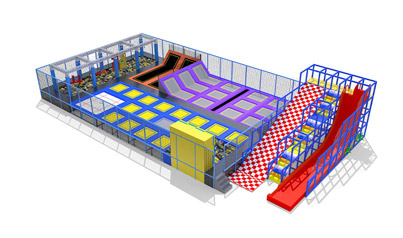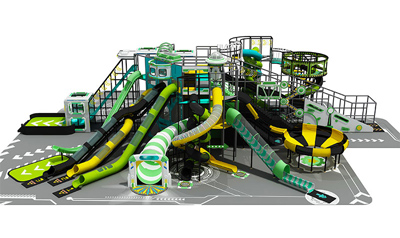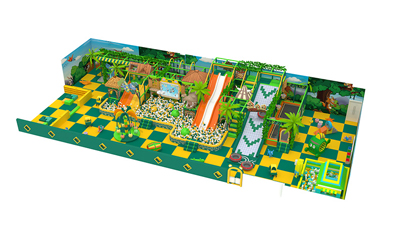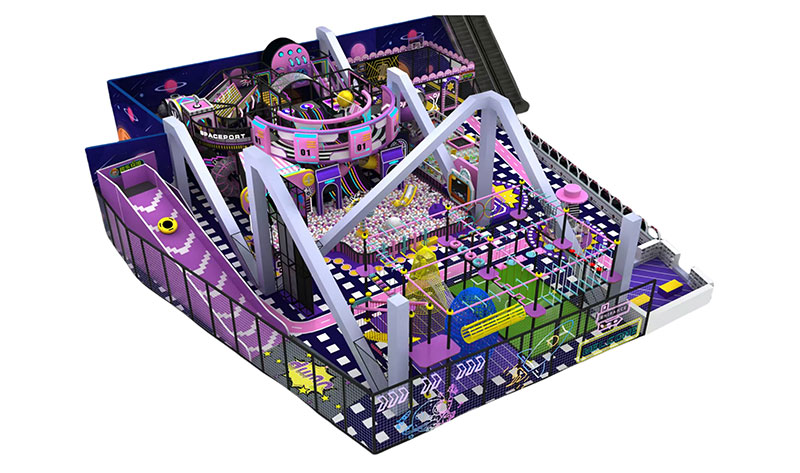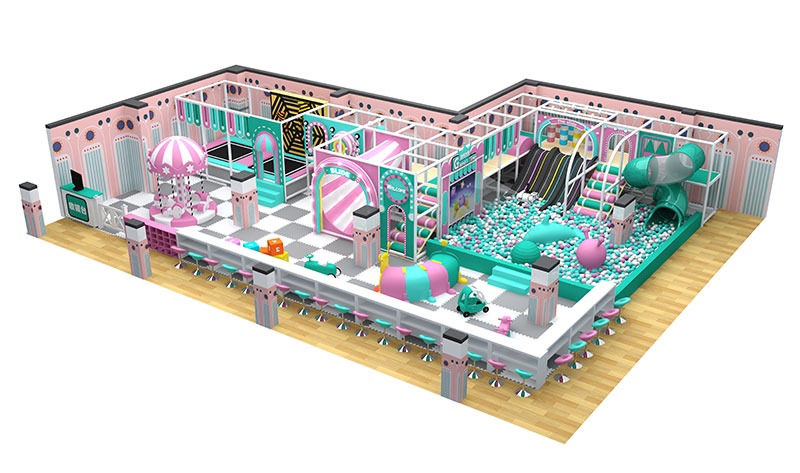Trampoline exercise is an important means of children's sensory integration training! Among the many children with sensory integration disorders, the imbalance of balance, coordination and vestibular sensation is the most basic and important problem.
Among the training methods for these points, the trampoline is the most common and effective method. Jumping helps to stimulate children's sensory system, improve the integration of proprioception and vestibular sensation, cultivate a sense of balance, and train children's hand-eye coordination, which is of great help to the maturity of children's independent movement and sports planning. Jumping on the trampoline also helps children's emotional stability and enterprising spirit to overcome difficulties.So how to use trampoline for sensory integration training?
For infants, toddlers, or children who are new to trampolining or who are afraid of trampolining, you can:
1. The trainer and the child sit on the trampoline together, and use the elasticity of the trampoline to shake it up and down with the support of the body;
2. For children who dare not go up, in order to reduce his fear, parents or teachers can carry the children on their backs to jump on the trampoline at first;
3. Let the child lie prone on the trampoline, and the partner will stand and jump, and jump the child up, so that the child can experience the feeling of ups and downs on the trampoline;
4. Let the child lie prone on the trampoline, lift the head and neck vigorously, and raise the chest as much as possible, which can strengthen the feeling of the vestibular system and promote the formation of body muscle proprioception;
When children are familiar with trampoline movement and exercise methods, they can:
5. Let the children jump freely on the trampoline, or jump on the trampoline holding the ball with both hands, or play a game of throwing and catching the ball with the instructor;
6. Let the children jump on the trampoline while throwing the ball in their hands into the designated basket;
7. Jump rope on the trampoline;
8. Hang a balloon above the trampoline and let the child hit the target every time he jumps. You can also hang a net basket on the trampoline and let the child throw the ball into the net when jumping. This kind of game can help the child to judge the visual space with the correct vestibular intrinsic feeling in mid-air, and it is very helpful for hand-eye coordination and body image.
9. Let two children stand on the trampoline face to face and jump together, or pull a small hula hoop together to jump together, so as to train the ability to coordinate movements with each other, and enhance visual stability through eyeballs during jumping.
In fact, jumping is a sport that cannot be ignored in the early stages of children's growth. When the child is 6 or 7 months old, he likes to be supported by his mother to jump. At this time, he can cooperate with his movements and let him jump up and down. Whenever the child uses his feet, the power will enter the toes and soles, and then Stimulate his brain while also developing his sense of balance while jumping. When the child stands more stably, he can also play jumping games on the sofa or spring bed. Parents can hold the child's armpit or hold the child's hands, so that he can enjoy the fun of bouncing. It is also possible for the child to hold on to the handrail to jump, and then develop to jump freely without support, and do some throwing and catching movements.
Jumping is good for children and not harmful! Trampoline jumping has more training, physical therapy and rehabilitation effects, and has a huge effect on children's growth. Formal sensory integration training is not as simple as ordinary play. If you find that your child needs training in this area, we suggest that you still find a formal training center and coach for systematic training, so as to achieve twice the result with half the effort. This is why many developed countries such as the United States have incorporated trampoline sports into the formal physical education curriculum of primary and secondary schools since World War II.


